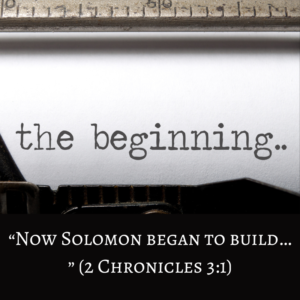
My previous post introduced my effort to simplify biblical prophecy, especially as it concerns Jesus’ Great Commission and Model Prayer.
God built a prophetic framework into the Scriptures, and it shows how (and when) He will fulfill His promises. Our job is to discover that framework. Doing so will help us understand our role in fulfilling the Great Commission, and it will help us as we pray the prayer Jesus gave us as a pattern, especially the request, “Your kingdom come. Your will be done on earth as it is in heaven” (Matt 6:10).
Where should we begin our search?
I suggest we use a process of elimination to select a passage as the foundation for our prophetic framework. Let’s use five guides: First, our primary passage should be in the New Testament. The apostle Paul said the prophetic mystery “in other ages was not made known to the sons of men, as it has now been revealed by the Spirit to His holy apostles and prophets” (Eph 3:5). Another apostle, Peter, said the Old Testament prophets longed to understand future (to them) blessings:
Of this salvation the prophets have inquired and searched carefully, who prophesied of the grace that would come to you, searching what, or what manner of time, the Spirit of Christ who was in them was indicating when He testified beforehand the sufferings of Christ and the glories that would follow. To them it was revealed that, not to themselves, but to us they were ministering the things which now have been reported to you through those who have preached the gospel to you by the Holy Spirit sent from heaven—things which angels desire to look into. (1 Pet 1:10–12)
The Holy Spirit showed the apostles how to interpret Old Testament prophecies, and he also showed them how to interpret Jesus’ prophetic statements. They understood what the prophets longed to know. So, their writings—the New Testament—give us the best place to start building our framework.
Second, we want a New Testament passage with plain, non-figurative language. Revelation is the New Testament’s longest prophecy but uses many prophetic images. What does the rider on a white horse in Revelation 6:2 represent? Biblical commentators give various answers, and there seems to be no way to know who is right. Such images eliminate Revelation as the best place to start. We need a passage with few symbols and easy-to-interpret non-figurative statements.
Third, we need a long prophetic passage in the New Testament that includes many parts of God’s prophetic framework. We’ve ruled out Revelation, so what is the next longest prophecy? It’s Jesus’ Olivet Discourse. Three passages in the Gospels have it: Matthew 24–25, Mark 13:1–37, and Luke 21:5–36. It is Jesus’ second-longest message—after the Sermon on the Mount (Matt 5:1–6:27)—and contains few prophetic images.
Fourth, we want a passage that influenced other New Testament prophetic passages. The Olivet Discourse does well here, too, because the apostles drew from it often. Had Jesus referred to the end of the age? So do they. Did he list signs that would appear before that time, including the “great tribulation”? The apostles do, too. The Olivet Discourse controlled many New Testament passages.
Fifth, our base passage should give a definite time statement. This feature will allow us to develop a timeline that shows the order of major prophetic events. As you may have guessed by now, the Olivet Discourse meets this requirement, too. Jesus said, “Assuredly, I say to you, this generation will by no means pass away till all these things take place” (Matt 24:34). The apostles adopted this perspective in the New Testament.
So, these five criteria point us to the Olivet Discourse as the place to start discovering the prophetic framework God placed in the Bible.
As we work through this passage in the following posts, I will usually begin with Matthew’s account. I have four reasons for doing this:
- Only he uses the critical Greek word parousia, often translated as “coming.”
- Only he refers to the “end of the age.”
- He includes parables that Mark and Luke omitted.
- He alone describes the sheep and goats judgment.
These elements are vital; we must understand them to find the prophetic framework God placed in the Bible. I will use the accounts in Mark and Luke to enhance our discoveries in Matthew.
The Discourse has five parts:
- Jesus’ prophecy of the temple’s destruction (Matt 24:1–2)
- The disciples’ two questions about that prophecy (Matt 24:3)
- Jesus’ response to their question about signs (Matt 24:4–31)
- His response to their question about the time of its fulfillment (Matt 24:32–36)
- His parables and exhortations (Matt 24:37–25:46)
We will examine each one in the order they appear in the Bible.
Jesus gave the Olivet Discourse on the Tuesday afternoon before His crucifixion. He gave the Great Commission to His disciples less than forty days after He rose from the dead and just before He then ascended back to heaven. The relationship between these two sayings—the Discourse and the Commission—is a key to understanding the Bible’s built-in prophetic framework.

3 comments
I like your approach here Mike. Simplicity.
Thank you for your continued encouragement! As I said in a recent post, my watchword now is “KISS” (Keep It Simple for the Saints).
I like your approach here. You’ve laid out a roadmap for how you will proceed and explained your reasoning well. I hadn’t realized that the Discourse was so close to the crucifixion.